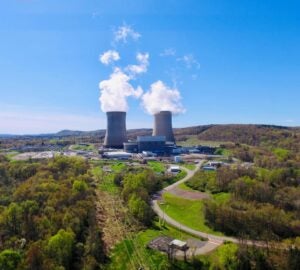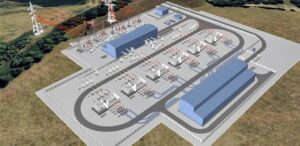T&D POWER Direct
-
Commentary
Unlocking Opportunities in AI Through Power Demand, Administration’s Initiatives
The U.S. is bracing for a reality where artificial intelligence and data centers overwhelm the power grid, and rightfully so, as America seeks to lead the global AI race. But this push is coming at the same time that the federal government is reshuffling fiscal priorities and prioritizing energy independence. While that dynamic may seem like a challenging juxtaposition, one thing is clear: regardless of political affiliation or preferred priority, if the U.S. wants to lead the world in AI, it must power it first.
-
O&M
Eaton, TVA Turning Retired Bull Run Coal Plant into Critical Grid Asset
Intelligent power management company Eaton is working with the Tennessee Valley Authority (TVA) to repurpose the utility’s retired Bull Run Fossil Plant in Clinton, Tennessee, into a critical asset supporting reliable and clean energy. The two groups on June 25 noted the importance of maintaining grid stability as more electricity comes from variable renewable energy […]
-
Coal
Ireland Ends Use of Coal for Power Generation
Ireland is no longer burning coal to produce electricity after the country’s last coal-fired unit was converted to use heavy fuel oil. ESB, the plant’s operator, on June 20 issued a notice that the 305-MW Unit 3 of the Moneypoint station, located on Ireland’s southwest coast, has ended its use of coal after 40 years. ESB previously had said Moneypoint after the conversion would operate under direct dispatch instructions from EirGrid, the grid operator, as part of the balancing market.
Tagged in: -
T&D
Tri-State Expanding Participation in Southwest Power Pool
Tri-State has filed an application to the Colorado Public Utilities Commission (CoPUC) as the cooperative power supplier plans to expand its participation in the Southwest Power Pool Regional Transmission Organization (SPP RTO) in the West.
Tagged in: -
Commentary
AI on the Edge: Can Distributed Computing Disrupt the Data Center Boom?
As artificial intelligence (AI) usage and sophistication grows, questions about the sustainability of the traditional model of utilizing huge, centralized data centers are frequently raised. Hyperscale data centers handle most AI workloads today, but they come with high energy demands and environmental costs.
Tagged in: -
Data Centers
Talen, Amazon Launch $18B Nuclear PPA—A Grid-Connected IPP Model for the Data Center Era
Talen Energy has restructured and significantly expanded its nuclear energy agreement with Amazon Web Services (AWS), finalizing a 17-year, $18 billion power purchase agreement (PPA) that will supply up to 1,920 MW of carbon-free electricity from the 2.5-GW Susquehanna nuclear plant to Amazon’s data centers across Pennsylvania. The deal, announced on June 11, restructures a […]
-
Trends
Meet the Tools Helping Power Companies Separate Threats from Noise
As threats to power companies rise—from cyberattacks to theft and vandalism—many utilities are rethinking how to secure facilities and critical infrastructure. Outdated systems that constantly trigger false alarms from wind, weather, or wildlife are draining resources—making it imperative for utilities to modernize their security to improve response, cut costs and reduce reliance on armed personnel. […]
Tagged in: -
T&D
Hitachi, Southwest Power Pool Join to Develop AI-Based Grid Solution
The Southwest Power Pool (SPP) regional transmission organization (RTO) is joining with energy technology company Hitachi on development of what the groups say is an artificial intelligence (AI)-based solution to support power transmission reliability and flexibility challenges.
-
Legal & Regulatory
Analysis: FERC Denies Hypothetical Capital Structure Incentive for Valley Link Transmission Project
The Federal Energy Regulatory Commission (FERC) on May 13 of this year issued an order addressing the formula rate filings and requests for transmission rate incentives for the Valley Link Transmission Project Portfolio. The project is a $3-billion, 417-mile multi-state transmission initiative spanning Maryland, Virginia, and West Virginia (collectively, Valley Link). While FERC approved several […]
-
Data Centers
UK’s National Grid Investing Billions for Substation Site to Power Data Centers
National Grid in the UK has begun construction of a new Uxbridge Moor substation complex in Buckinghamshire, a project designed to connect more than one dozen new data centers to the electricity provider’s network.
Tagged in:










